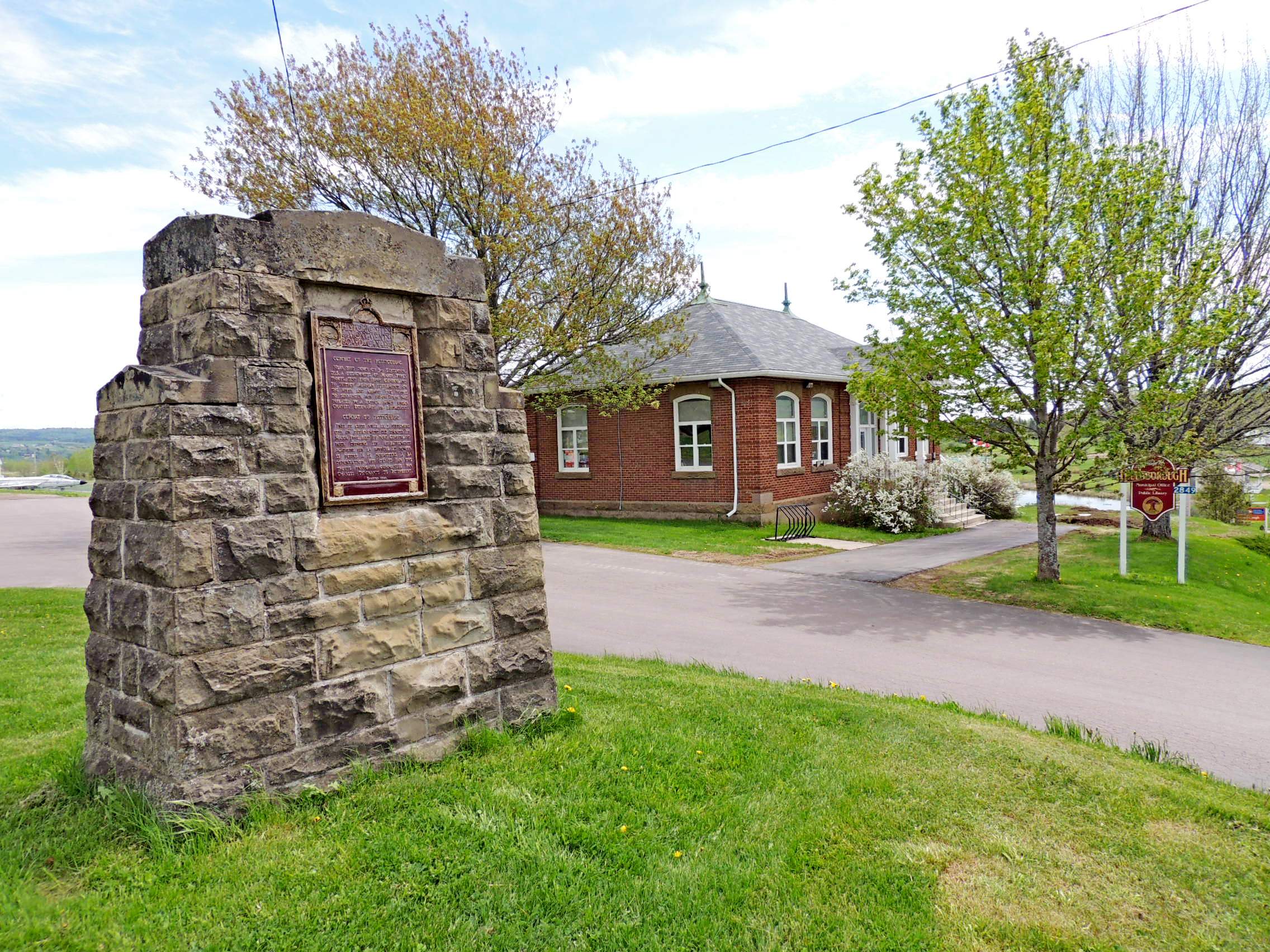|
 Battle of Petitcodiac - Hillsborough, NB Posted by:  T0SHEA T0SHEA
N 45° 55.379 W 064° 38.734
20T E 372403 N 5086806
Marking a victory by the Acadians over British forces at Petitcodiac in New Brunswick, this monument stands along Main Street in Hillsborough, not far distant from the location of the battle.
Waymark Code: WMTW5N
Location: New Brunswick, Canada
Date Posted: 01/13/2017
Views: 7
This plaque is mounted on a large mortared stone monument in front of the New Brunswick Railway Museum and beside the Hillsborough Municipal office and library.
The Battle of Petitcodiac took place on September 2, 1755, the Acadians defeating a New England provincial military force,
delaying the expulsion of many of the Acadians on the Petitcodiac River for three years. As will be seen below, it was a hollow victory, as the Acadians were eventually deported, a great many dying on their deportation journeys. After the signing of the Treaty of Paris on February 10, 1763, many Acadians were allowed to return to their old homes in the Maritimes.
Combat of the Petitcodiac.
Near this town on 3rd September, 1755, a detachment of Major Frye's troops, sent from Fort Cumberland to destroy Acadian Settlements on the river and compel the people to surrender for deportation, was defeated by a French force under Charles Deschamps de Boishébert.
From the CNHE Plaque

Acadien Battle Field
DESCRIPTION OF HISTORIC PLACE
The Acacdian Battlefield is a natural marsh landscape that served as the setting of the Battle of Hillsborough in 1755. The Acadian villagers who occupied the site prior to the battle erected dykes and aboiteaux that exist today. A commemorative stone cairn is located above the battlefield site.
HERITAGE VALUE
The Acadian Battlefield, the site of the Battle of Hillsborough, is historically significant because of the pivotal role it played in the history of eastern Canada. Despite their victory here, the Acadians did not mount any further organized resistance to the Acadian Expulsion (Le Grand Dérangement). This battlefield is not marked by rusted cannons or broken stone casements. The only defences evident are the dykes and the nearby aboiteau the Acadians had raised fifty years before the battle occurred to protect their marsh lands against the twice daily tidal invasions of the Petitcodiac River.
A cairn, erected in 1922, stands above the battlefield it commemorates. The inscription reads, “COMBAT of the PETITCODIAC Near this town on 3rd September, 1755 a detachment of Major Frye’s, sent from Fort Cumberland to destroy Acadian settlements on the river and compel the people to surrender for deportation, was defeated by a French Force under Charles Deschamps de Boishebert.”
The battle raged across a section of marsh to the south and below the village for several hours. By the time the British were able to retreat to their boats they had suffered sixteen losses and seven wounded. The number of casualties is comparable to the total number suffered by the British during the siege and capture of Fort Beauséjour in May and June, 1755.
The British force landed to the north of the settlement. They began to destroy crops as they moved across the fields and up into the village. The force of one hundred men began to move into the settlement taking women and children captive and setting fire to houses and barns.
A French force under the command of the only French military officer left in Acadia had arrived a day too late to defend Shepody, a settlement on the Petitcodiac River south of Hillsborough. He gathered the men who had fled Shepody and hurried north. The Acadians could see the smoke of the burning village as they positioned themselves between the river and the dykes. The British were cut off from their boats, and pinned down on the open fields by the well concealed Acadian force. The battle raged for several hours before the British could make their bloody escape.
The victors of the Battle of Hillsborough had very little to celebrate. Their villages of Shepody and Hillsborough had been burned. Their wives and children had been carried off for deportation. It was late summer and their crops had been destroyed. Their livestock had been taken to Fort Beauséjour (named Fort Cumberland after its occupation by the British). Colonel Monckton, Commander and Chief of the Acadian operation, recorded this action in his journal on August 28, 1755 with these words: “Major Frye returned but with very bad success for having devided (sic) his party. One of them was surprised by the enemy and lost 23 men killed and taken. One officer was killed and another wounded; however, they burnt about 300 houses and brought in about 30 women and children.”
CHARACTER-DEFINING ELEMENTS
- its location only steps from the Hillsborough Information Centre and accessible by walking trails winding through a waterfowl sanctuary;
- unaltered physical context of the landscape demonstrating the setting of the battle;
- cairn erected in 1922 commemorating the battle;
- proximity along the dike to a working aboiteau.
From Historic Places Canada
Type of Historic Marker: Canadian National Historic Event

Historical Marker Issuing Authority: Government of Canada

Age/Event Date: 09/02/1755

Related Website: [Web Link]

Give your Rating: 

|
Visit Instructions:
Please submit your visiting log with a picture of the object and include some interesting information about your visit.
|